1 July 2015 Edition
Surf and Turf
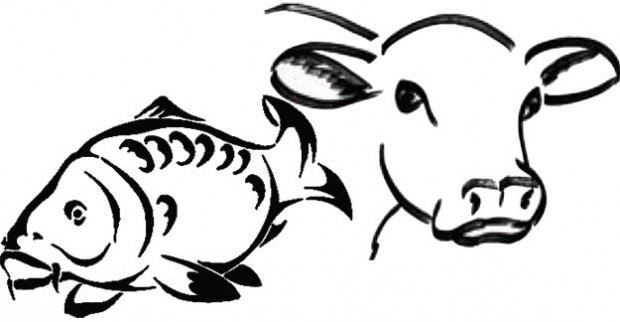
Traditional cuisine is going through a transformation not to everyone’s taste ROBERT ALLEN on the war being fought over the nation’s favourite foods
SPARE A THOUGHT this summer as you savour your steak and mash with battered onion rings for young parents with hungry children, and not a mouthwatering burger or delicious nugget or succulent meatball in sight.
It is a relatively common scenario. The parents, after a long day doing nothing, want a drink in a pub that has an all-day bar menu. Their chosen pub looks promising. There is bacon and cabbage, ham and parsley sauce, fish and chips, stuffed roast pork, lamb shank, Irish stew, roast chicken, beef and Guinness stew, lasagne, stir-fry . . . with boiled, chipped or mashed potato and, increasingly ubiquitous these days, the inevitable bowl of chowder with brown soda bread. And that old favourite, sirloin steak, is available in various sizes.
What is missing is a genuine children’s menu. What is available is generally a scaled-down version of the comfort food that is now part of modern eating. Fried and grilled food dominate the culinary landscape, whether it is an up market pub-restaurant in the centre of town or an all-purpose filling station on the edge of the village. This Americanisation of food looks appealing and is hardly healthy, but given that the world now loves an Irish fry-up for breakfast we cannot complain.
And especially as a slow wind of change is coming, and is being seen in pubs all over the country.
Despite appearances, more pubs are chain-owned and like to give tourists the impression that they are family-owned. Locals know better. In the kitchen these places are hot-houses for the chefs and cooks without a moment to spare in the madness of the school holiday season. Fast food, no matter the circumstances, is never good food, but it is expedient.
Bar food has been with us now for 25 years. Before 1990 you would have been thrown out of a city pub for daring to ask for a cup of tea and a sandwich. “This is a pub; we sell Guinness and whiskey,” was the infamous comment whipped back by a Dublin publican to a hungry tourist one afternoon after holy hour. “The shop on the corner sells crisps!”
We have come a long way since then, since burger vans on the side of the road and the emerging fast-food culture of chips with everything. Never mind fish on a Friday, what about food on a Sunday?
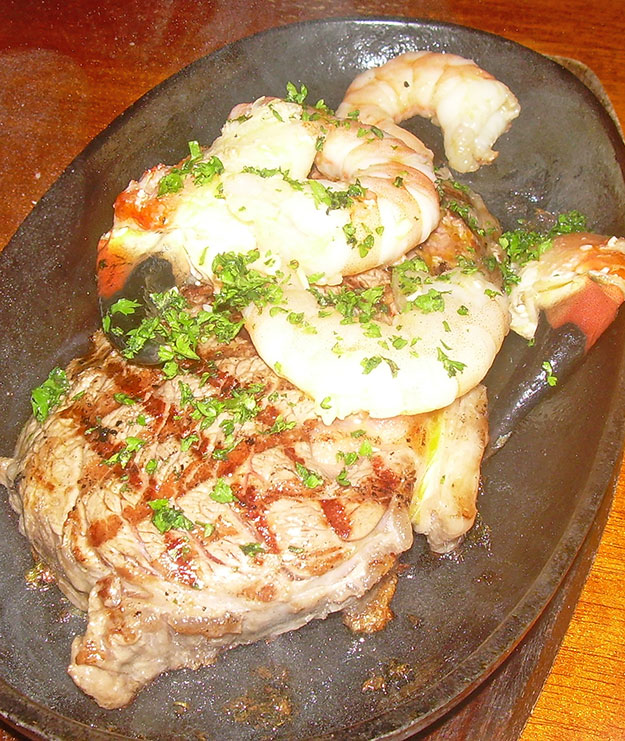
• 'Surf and turf' using fresh local fish and beef
The Kellys of Tyrone (and Donegal)
The Kellys of Tyrone were among the first publicans to realise that bar food was the coming new thing.
At their Lobster Pot pub-restaurant in Burtonport, they are once again the future of Irish traditional food – a curious mix of the old favourites, a hint of Americana, fresh local produce and that delicate balance between fast food and slow food, all embodied by a desire to serve good food, fish in particular.
Their signature dish is a giant platter of seafood including shellfish in the shape of crab, lobster and prawn meat decoratively arranged with little gems of delight hidden among the fish. One of these gems is the peppered smoked mackerel from Irish Atlantic, the fish canners up the road in Dungloe.
Before the ban of the fishing of salmon at sea, the Burtonport fleet landed more salmon than any port in Europe. Now a few fishers catch crab and lobster, which go on the menu in the bar now run by Tim Bechtold of Minnesota, who fronts, and Anne Kelly, who cooks, delivering some of the best fish dishes in the country. These include the emerging trend – surf and turf using fresh, local beef and fish.
The Lobster Pot menu is always evolving, and by serving lobster it lives up to its name, but it offers something else – excellent, perfectly cooked seafood and a range of dishes that embrace traditional Irish, genuine Americana and modern European trends – appealing to children as well as adults.
Hidden away in west Donegal, this is a pub that thrives on the tourist trade during the high season and relies on the local trade during dark, cold nights in winter. It is either a feast or a famine for them – full to the brim in summer, empty in winter.
“In the high season, if a family with hungry children comes in we tell them they may have to wait for an hour,” says Tim Bechtold. “Everyone comes in at half-seven and expects to be served quickly.”
It’s a refrain known to all who have served in a gastro pub, a problem that exists the world over and a frequent complaint on the online message boards. “Food was great, took too long to come and was cold.”
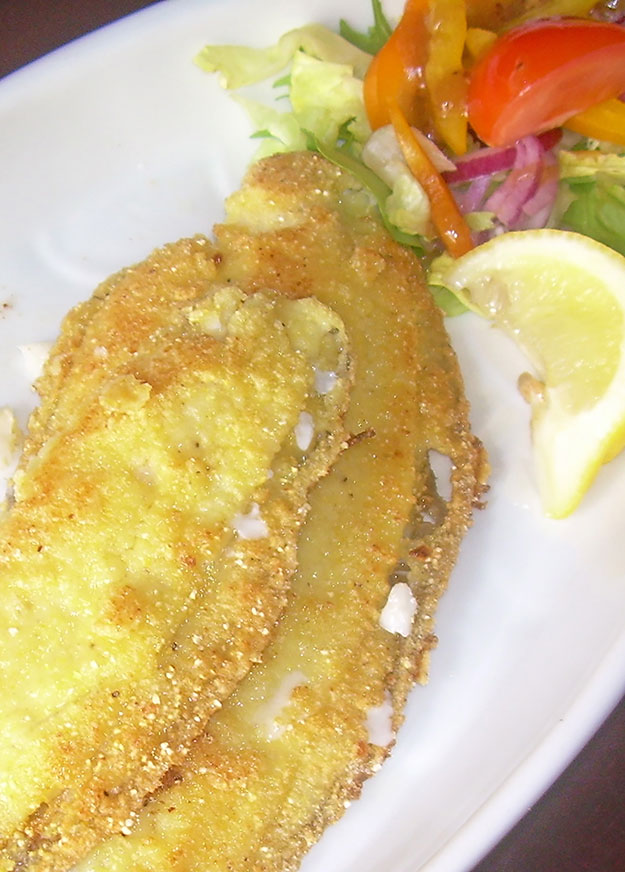
• Lemon sole in a crispy coating
Mannings Emporium, Ballylickey, west Cork
If seafood chowder was the next big thing throughout the 1990s and 2000s, remaining popular, surf and turf or sink and swim is the latest version. It has an American influence, large portions and (to the Irish palate) an unusual combination: steak and lobster with assorted fish.
Gastro pubs offering a menu filled with beef dishes and fish dishes have been proliferating in recent years. The emphasis is on freshness and quality. Mannings Emporium in Ballylickey in west Cork always offered a sandwich of cheese and salami, and a glass of wine. Now, with a new generation in charge, they have expanded to offer the passing tourist a taste of Ireland.
Their meatballs, made with beef from mature cattle reared on the Beara Peninsula, are probably the best in Ireland. Mouthwatering and succulent, they are an example of what can be served as food in the fast lane of the tourist highway.
Beef, usually from Angus or Hereford cattle, has never lived up to its expectation because it is killed too early. Chefs with a discerning palate realised a long time ago that the best beef comes from cattle that have been allowed to live a little longer.
But back to the chowder, because it is now starting to lose its charm. “I wonder,” says Anne Addicott, co-author of the forthcoming Around Ireland in 80 Days in Search of Fish and Fortune, “do they buy it ready made?”
This is a pertinent question. She has been on a chowder quest as part of her research for many years and has come to realise that the best chowder is made simply – a strong fish stock, a potato base and chunks of smoked and unsmoked fish added to the hot soup just before serving.
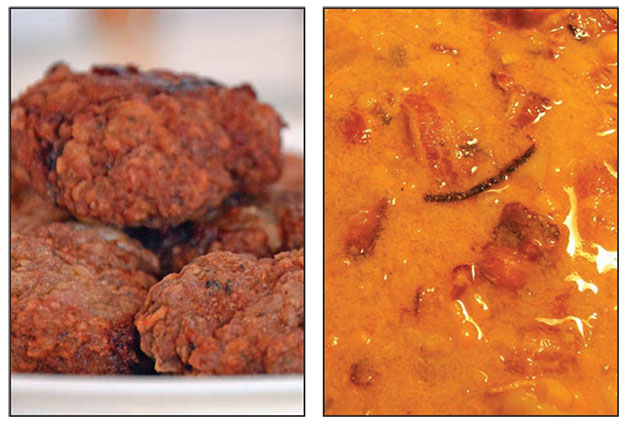
• Meatballs made with mature beef from the Beara peninsula and traditional seafood chowder
Best seafood chowder
Without question, the best seafood chowder is served in Aherne’s of Youghal in east Cork and in O’Dowd’s of Roundstone in west Galway, with the chowder served in the Fisherman’s Catch at the pier in Clogherhead in Louth a close rival.
Unfortunately, despite the All-Ireland Chowder Championship (which sought to celebrate the quality of this modern traditional dish), the majority of chowder served in gastro pubs and pub-restaurants is made with frozen fillets of smoked fish, farmed salmon and stock not worthy of the name. It is one thing to serve a chowder at a championship play-off and another to serve it to customers who think they are tasting the real thing.
Cheese, chowder and comfort food would make a great name for a food book, but it should not make the basis for a menu when there are so many people with dietary requirements, children who need healthy food and the discerning who want nothing more than a tasty meal made with fresh, preferably local ingredients.
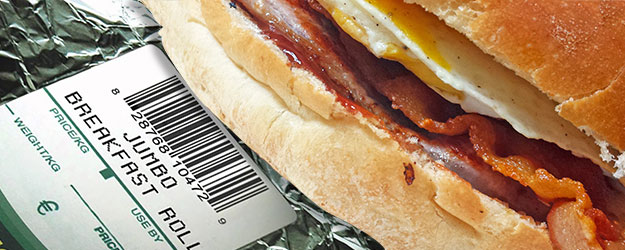
8 The jumbo breakfast roll emerged in a food culture that pays little attention of when and where or what is appropriate to eat
Meatballs and the jumbo breakfast roll
While pork is still seen as a breakfast product, there has been a general trend to serve stuffed roast pork as a lunchtime dinner, especially in rural pub-restaurants. And this brings us to a question about meatballs, which have never been a traditional Irish dish.
From one end of Europe to the other, meatballs feature as national dishes, made with a combination of beef and pork. Meatballs made exclusively with beef rarely feature, making the Ballylickey meatballs a very special product.
Why do our gastro pubs ignore the fact that children in continental Europe consume huge qualities of meatballs served in an aromatic or sweet tomato sauce? Even the Italians, who are not big meatball eaters, serve them to their young ones.
Several years ago, Perry Share in Sligo commented on the emergence of the “jumbo breakfast roll” (rashers, sausages, black and white pudding, fried egg, cheese, mushrooms, tomatoes). He described it as a food event “that can be placed at the intersection of numerous vectors that criss-cross contemporary Irish society” and cited the modern convenience store and garage forecourt, which provide hot deli products.
“Made within the context of a food culture that apparently pays little store by ‘traditional’ notions of when and where or what it is appropriate to eat,” Perry noted that “we have a fluid approach that tends to equate ‘food’ with ‘fuel’ – so it is doubly appropriate that so much of our food is now purchased at outlets that can offer both (and Lotto too!).”
It appears that we no longer have a traditional food culture, if the menus in our pub-restaurants are symptomatic of a trend, and it would be a shame if the “convenience culture” infiltrated the thinking of publicans who offer food to tourists and travellers.
The country is alive with food products yet the majority of our food is imported (we export fresh fish and import frozen fish!). The people who make up pub-restaurant menus seem not to consider the type of customer yet try to be all things to all people, young and old.
The pub-restaurant should be a window into the world of traditional Irish food products, for natives and tourists alike. But we must not forget, especially during the summer months, that children need to be fed and they deserve better than the choice they are being offered now – and not just to keep the parents sane.




